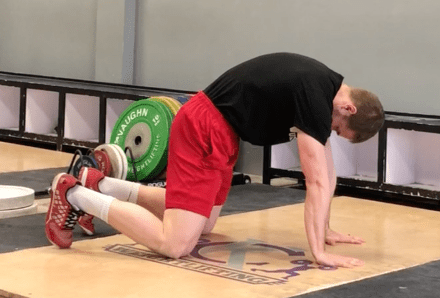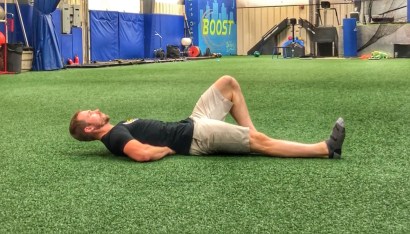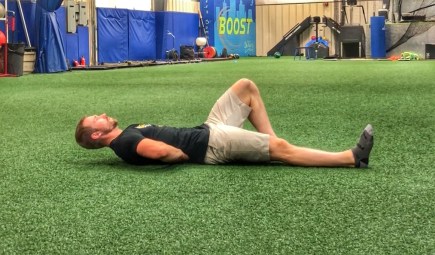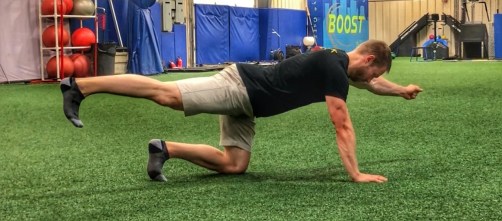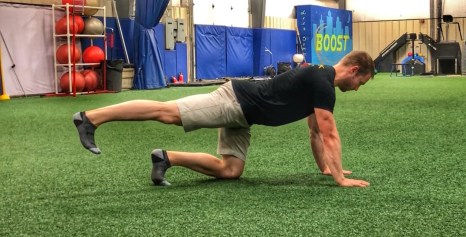Back pain can come from a variety of sources and differs among individuals, but here I will describe 3 core stability exercises and one mobility exercise that have been researched and proven effective for numerous sources of lower back pain by back pain specialist Dr. Stuart M. McGill of the University of Waterloo.
Dr. McGill recommends that before you perform his recommended core stability exercises, you perform a warm-up mobility exercise known as the ‘cat-camel.’ This is a spine friendly exercise that can be performed even if you suffer from back pain1.
To perform the ‘cat-camel’ you begin on your hands and knees. You then move in to a flexed position by lifting your belly button and entire ribcage towards the ceiling while looking down with your head to bring you in to the ‘camel’ position. After a couple of seconds, move your back the other direction, bringing your belly button towards the floor and looking straight ahead. With both movements, only move to a pain free end position – no forcing movement into pain2.
Moving on to the 3 core stability exercises, which have been collectively called McGill’s ‘Big 3’. They are the curl up, the side plank, and the bird dog exercises.
Curl Up: To perform the curl up, as prescribed by Dr. McGill, lay on your back with one knee bent up, your hands placed behind you at your lower back and then lift your head off of the floor 1-2 inches and hold for up to 10 seconds. No movement should occur at the lower back.
Side plank: There are many ways to modify this exercise, but the starting version when you have lower back pain is to lay on your side with both knees bent and one elbow on the floor with the opposite hand placed on the other shoulder. Next, you will lift your hips off of the floor trying to make a straight line with your body, again holding 10 seconds. Repeat on the other side.
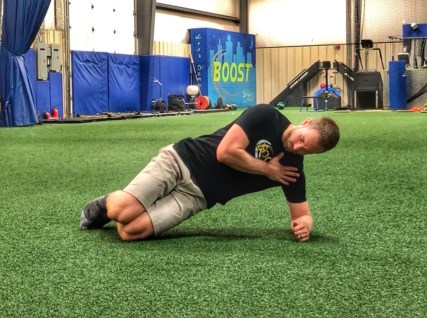
Bird-dog: For this exercise you begin on your hands and knees, followed by raising your opposite arm and leg at the same time while not allowing your core to move at all. In the end position, your arm, trunk, and leg should form a straight line. If you have pain with this, perform only leg kicks without the arm raises. Again, aim for holding this position for 10 seconds and repeat on each side.
In conclusion, these are exercises that have been found to be helpful at improving core stability in individuals with some forms of lower back pain. Try them out while keeping in mind that it takes time to make noticeable improvements in strength and stability with any exercise. If you are looking for more guidance regarding care for your low back, please call the Windom Area Health Rehabilitation Department at (507) 831-0634 to schedule an appointment today. (Physician’s referral required)
By Ike Pohlman
Telemed/Virtual appointments are potential options for new and current patients for PT, OT, and Speech Therapy services at Windom Area Health.
References:
- McGill SM. Stability: from biomechanical concept to chiropractic practice. J Can Chiropr Assoc. 1999;43(2)
- Squat University. (2020). The McGill Big 3 For Core Stability. [online] Available at: https://squatuniversity.com/2018/06/21/the-mcgill-big-3-for-core-stability/ [Accessed 3 Feb. 2020].
- All Images within this blog are from https://squatuniversity.com/2018/06/21/the-mcgill-big-3-for-core-stability/

